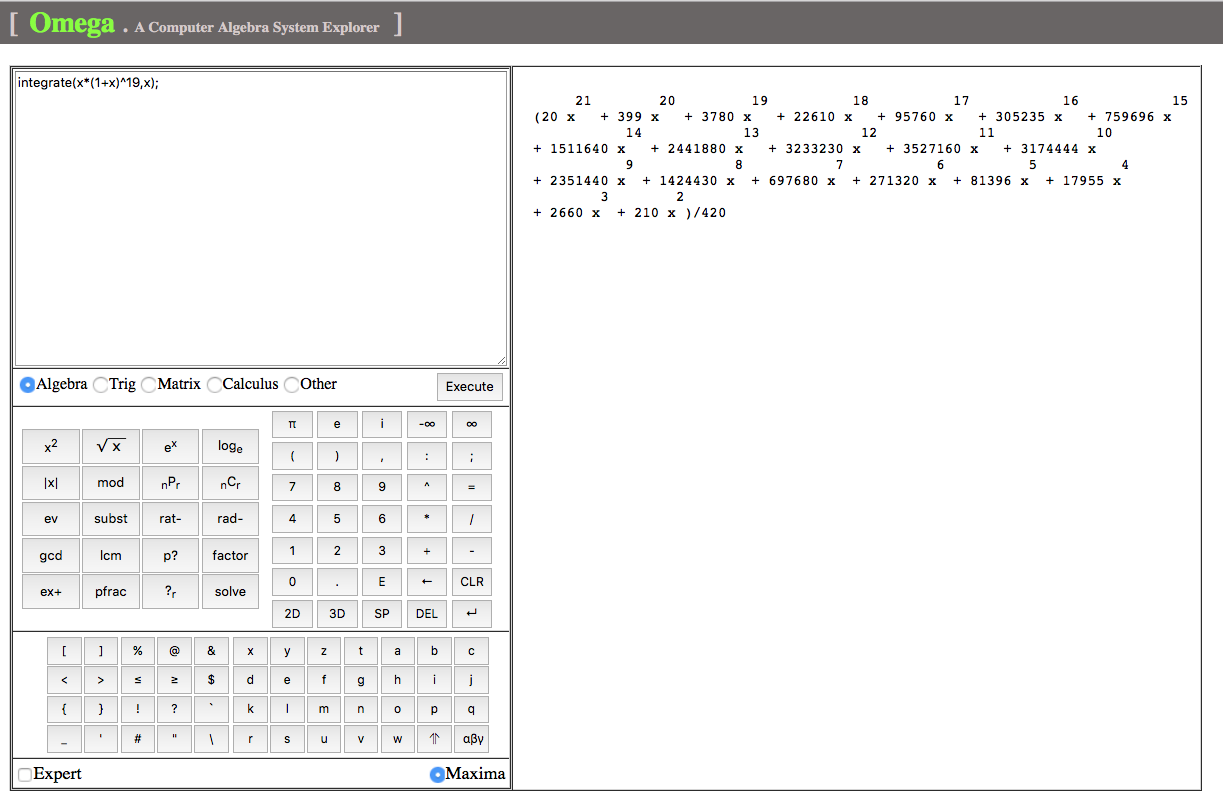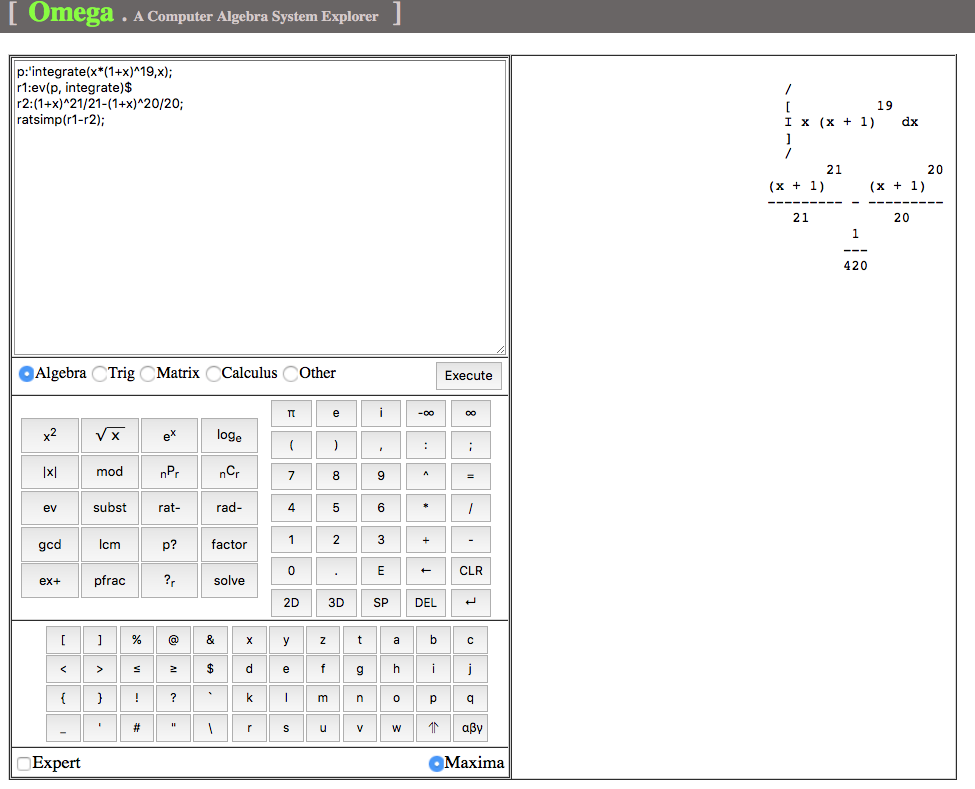
Heron’s formula concerning , the area of any triangle states:
where a,b,c are the three sides of the triangle and, .
We are going to prove it with the aid of a CAS:
Substituting into (1), the formula becomes
A triangle with three known sides is shown in Fig.1 where is part of the base of the triangle.
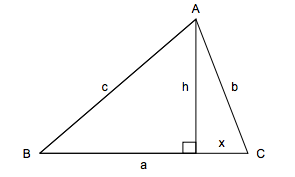
Fig. 1
By Pythagorean theorem,
To obtain , we will use Omega CAS Explorer (see Fig. 2)
The function ‘eliminate’ eliminates variable , returns the value of
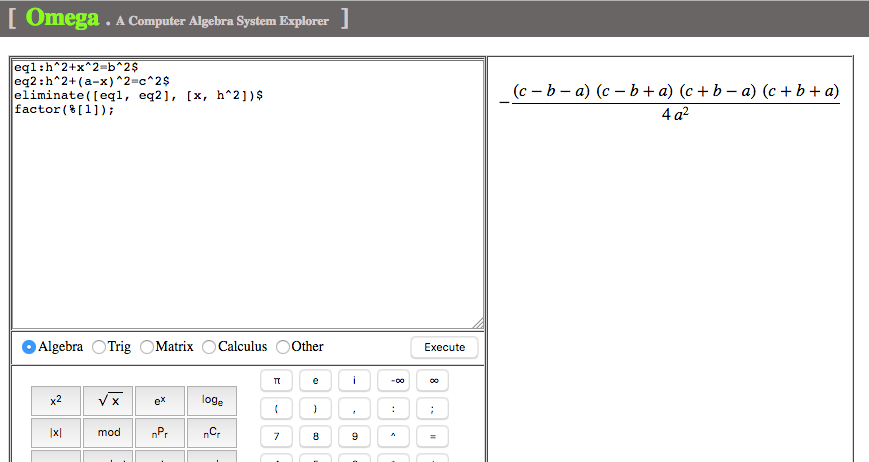
Fig. 2
The result is , i.e.,
.
Therefore, using the standard formula for triangle,
which is (2)
This is the 1st example in my presentation at ACA 2013 titled “An Algebraic Approach to Geometric Proof Using a Computer Algebra System”.
In Fig. 3, . Can you find the area of
?
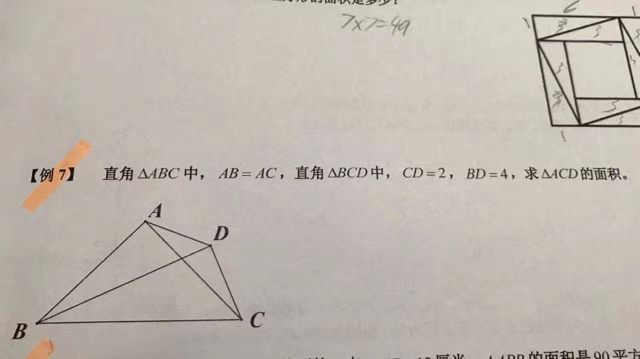
Fig. 3



